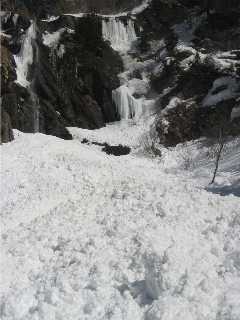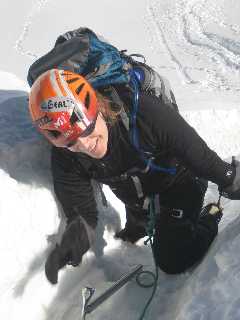 Good food adds a lot of fun to backcountry adventures. Sure…good friends and good conditions are essential…but without adequate food, um–let’s face it–I get hangry (that’s being so hungry that I’m angry; hence: hangry). I notice that if I have good, healthy snacks easily available on long hikes and ski tours, I usually avoid getting to this point. I just wrote an article for the About.com Survival Skills website called “Cold-Weather Survival Snacks: Lightweight but Loaded.” You can usually find me with at least several of the items I wrote about stuffed into my pockets: nuts, seeds, dried fruit, jerky, or PBJ rolls. But snacks are snacks, and if I’ve eaten enough good snacks and had enough water to drink en route, I don’t usually arrive at a destination hangry…but I’m always happy to pitch in and get a good backcountry hut meal going.
Good food adds a lot of fun to backcountry adventures. Sure…good friends and good conditions are essential…but without adequate food, um–let’s face it–I get hangry (that’s being so hungry that I’m angry; hence: hangry). I notice that if I have good, healthy snacks easily available on long hikes and ski tours, I usually avoid getting to this point. I just wrote an article for the About.com Survival Skills website called “Cold-Weather Survival Snacks: Lightweight but Loaded.” You can usually find me with at least several of the items I wrote about stuffed into my pockets: nuts, seeds, dried fruit, jerky, or PBJ rolls. But snacks are snacks, and if I’ve eaten enough good snacks and had enough water to drink en route, I don’t usually arrive at a destination hangry…but I’m always happy to pitch in and get a good backcountry hut meal going.
One of my most memorable hut trip meals was the one a group of us carried in to the Gothic hut near Crested Butte. It was a friend’s birthday, and we had our backpacks stuffed for the occasion.
For breakfast, we had the most amazingly gut-busting concoction with ingredients including egg beaters, tater tots, bacon, and cheese. It all started with Deb cooking up the egg beaters:
Then, we layered the tots on the bottom, eggs, bacon, and cheese on the top:
After a while in the oven, the thing was a cheesy-bacony-yummy mix:
On this breakfast, we could have hiked and skied for a week straight, but it at least got the birthday boy and a few of us to the top of Belle Vue for a nice powder ski down back to the front door.

Final advice: Forget the bacon, eggs, and cheese…unless you’re going on a hut trip.
For more nutritious cold-weather snacks, see my article on the About.com Survival Skills website:
“Cold-Weather Survival Snacks: Lightweight but Loaded”
When you’re out for extended periods of time in the cold weather, it’s important to think of food as fuel. But you don’t want your backpack to be as heavy as a brick, as carrying a heavy load will make you need even more fuel to help keep you going…click here to continue reading…
Photos © Traci J. Macnamara.
























